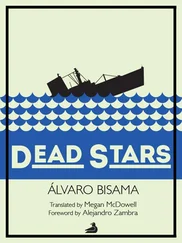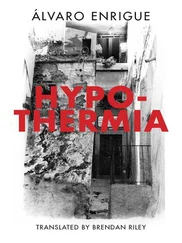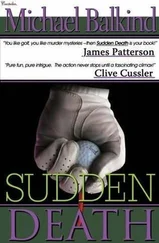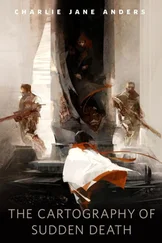And it works the other way round too: if Cuauhtémoc had ever spoken to Malinalli, he would have called her Malitzin, as if the political class to which he belonged had not given her up as a sex toy to a local leader just because he won a battle. This means something, and if it went unmentioned, this book would no longer be a machine for understanding the world, or the ways in which we name the world. We know that Malinche was the terrible word Cortés came up with for Malinalli. He could not say, or he didn’t want to say, Malitzin. His pronunciation of Nahuatl was so atrocious that it confused people: the Indians who survived the conquest called him Malinche; they didn’t understand that he was simply trying to address his mistress politely in Aztec terms.
During the conquest, some contest played out between the Mayan princess subjected to the indignity of sexual servitude and Cuauhtémoc, the young emperor witnessing the annihilation of his realm. And this duel, I’m convinced, is visible in the succession of names adopted by the woman whose resentment shifted the balance of the world: Malinalli, princess-whore; Malitzin, mouthpiece of the soldiers and politicians who held history in their fists perhaps without realizing it; Doña Marina (her Catholic name), mother of the conquistador’s children and owner of a Spanish palace on the outskirts of Mexico City; Malinche, the bitch who vanished from history after having delivered America to the Europeans. Over the course of her life, Malinalli Tenépatl was many people, like all of us, but she had the privilege of possessing a different name for each incarnation. In today’s Spanish, her name is the root of an adjective: malinchista means someone who prefers the foreign and disdains his own culture.
Caravaggio’s name or lack of a name is so important that Peter Robb, one of his most painstaking biographers, doesn’t dare to name him in the book he wrote about him. It is titled M: The Man Who Became Caravaggio , because no document exists to prove that as a child he bore the name he claimed as an adult: Michelangelo Merisi. It’s a fact that his father’s last name was the Milanese Merixio, and that he changed it to the Roman Merisi when he began to sell paintings; it’s likely that his name was Michele and when he got to Rome he added the “angelo” to emulate the most famous artist of the day. Later he decided to erase it all and adopt the generic and enigmatic “Caravaggio,” the name of his undistinguished and insignificant hometown. It’s as if Andy Warhol had signed his serigraphs “Pittsburgh.”
Certainly Cuauhtémoc could be simply Cuauhtémoc in this book, but to dispense with the enigma of the name changes, or to list them at the end of the book and thus create an illusion of clarity where there is none, would be to banish the reader to the stands, to bounce him off the court. A novel isn’t a Cartesian diagram. Pope Pius IV’s surname was Medici, though he wasn’t related to the grand duke of Florence; there were two Borromeos who were bishops of Milan; all of Hernán Cortés’s male offspring were called Martín and all of the important women in his life were called Juana. These facts were confusing in their own time, and there’s no reason why they shouldn’t be confusing in a novel that doesn’t aspire to accurately represent that time, but does want to present it as a theory about the world we live in today.
The question here is the responsibility I bear in the face of the reasonable fear that what is being said won’t be understood. The risk is worth the weight of that responsibility. The sole duty of a writer is to minister to his readers: to liberate them from inexactitude out of respect for the mysterious and touching pact of loyalty that they make with books. But the problem is that I don’t always know why name changes are significant in Mexico, and my hunch is that there is a whole history and politics behind it. When something is clear to a writer, I think it’s fair to ask him not to obscure it, but when something is unclear I think it should be left that way. The honest thing is to relay my doubts, and let the conversation move one step forward: the readers may know better.
Judith Beheading Holofernes

J udith Beheading Holofernes measures about four and a half by six and a half feet. It’s a difficult painting to transport, but not unwieldy enough to warrant asking for help: gripping it by the lower upright edge and resting the central crosspiece on the shoulder, one should be able to carry it across the piazza of San Luigi dei Francesi in Rome. After Caravaggio had painted it, he did just that: hoisting the painting onto his shoulder in his studio, he crossed the courtyard that separated the service quarters from the kitchen and walked from one side of the piazza to the other to deliver it to the mansion of the banker Vincenzo Giustiniani, who wanted it.
It was the last work Caravaggio painted before becoming Rome’s greatest art-world celebrity on the complicated cusp of the sixteenth century. He must have delivered it before the church of San Luigi dei Francesi opened its doors for the early mass; he was scandalously behind on the commission for the Calling and the Martyrdom , which would hang in the church’s Contarelli Chapel. The delivery date on the contract that he had signed with the congregation of San Luigi dei Francesi had twice been missed, and he was so late that Cardinal Matthieu Contarelli, who had planned the chapel in honor of his namesake apostle, had already died.
There were reasons for Caravaggio’s delay: the decoration of the Contarelli Chapel was his first commission for a place of worship and he wanted these two pieces of public art to be masterpieces — as they indisputably are. He also understood that the lucky star lighting his path was powered by the generosity of del Monte and Giustiniani, so he attended to the needs of his patrons before those of his clients.
The morning of August 14, 1599, when Caravaggio carried the painting from the Palazzo Madama to the banker’s palace, was surely hot, which means the artist probably wasn’t wearing the legendary black cloak in which he appears draped in absolutely all the descriptions — and there are many of them — of his arrests in the police precincts of Rome.
Merisi was a man of extremes, a desperate man. Between the summer and autumn of 1599 he had one of his most productive periods, which means he must have been nervously sober when he delivered the painting to the Palazzo Giustiniani — bruised circles under his eyes, dull skin, the glazed look of those who’ve worked for days on end without rest. Caravaggio didn’t draw: he painted directly in oil on canvas; and he didn’t trust the prodigious Mannerist capacity for imagination: he staged the scenes he painted in his studio, with real models. He did the work all at once, laboring by the millimeter for days on end, using sources of controlled light that he reproduced on the canvas just as they appeared to him.
The scene in which Judith cuts off the head of King Holofernes takes place at night, which means that the windows of the studio must have been covered and the models painted by candlelight. Chances are that Caravaggio delivered the piece the moment he decided it was finished. He was in desperate need of money to buy the materials to finally embark on the monumental oils for San Luigi dei Francesi.
He must have crossed the plaza quickly, furtively, without a word to the loiterers who had missed his company during the nights it took him to finish the painting. He must have carried it uncovered, because he couldn’t even drape it with a cloth — an oil painting takes years to dry — and neither could he rest the painted surface on his shoulder. Once at the door of the Palazzo Giustiniani he must have lowered it and, propping it on the toes of his boots so that it wasn’t soiled by the dirty ground, banged the doorknocker with one hand as he balanced the painting on his feet with the other.
Читать дальше













